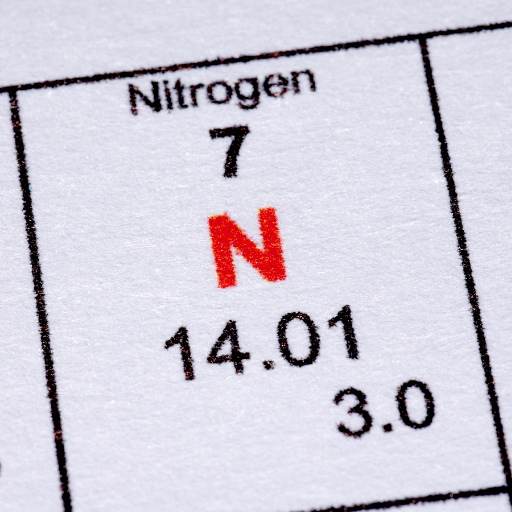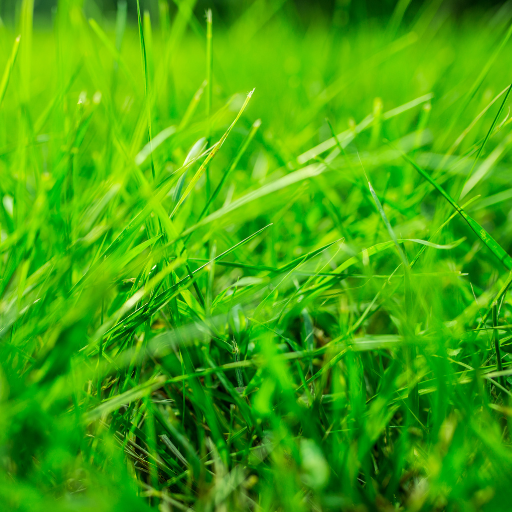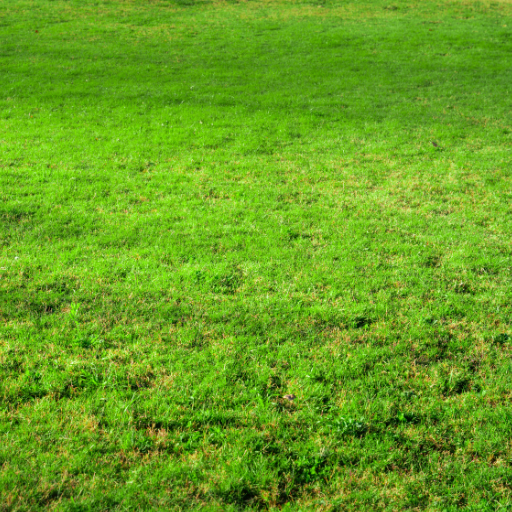A lot of homeowners would like to keep a lawn that is lush and green, which means they should be aware of the role played by fertilizers in the process. They provide vital nutrients that make grass grow and stay healthy, thus giving a lively lawn that is strong enough to withstand different conditions. Nitrogen is one of these elements, which play a significant part in your lawn’s growth. This piece will delve into nitrogen’s importance in the maintenance of lawns, its advantages, the science behind its work, and how best to apply it. With knowledge about these basics, readers can walk away with the right background information to enable them to come up with an optimal plan for their yard care, ensuring maximum results.
What Is Nitrogen and Why Does Your Lawn Need It?

Nitrogen is an essential macro-nutrient that powers the growth and vigor of grass. It forms a fundamental component of chlorophyll, which is the compound responsible for enabling plants to photosynthesize and produce energy. Grass cannot perform efficient photosynthesis without enough nitrogen, which leads to stunted growth, yellow leaves and generally poor health. Nitrogen also plays a vital role in producing amino acids, proteins, and DNA necessary for cell division and tissue development among plants. By supplying ample nitrogen for your lawn, you would ensure a vibrant, healthy lawn that can withstand stressful environmental conditions as well as compete strongly with weeds.
Understanding the Role of Nitrogen in Grass Growth
The impact of nitrogen on some important physiological processes can help us understand why it’s essential for grass growth. First of all, as a major constituent of chlorophyll (C₅₅H₇₂O₅N₄Mg), nitrogen facilitates sunlight absorption into chemical energy during photosynthesis. Adequate nitrogen levels favor the synthesis of chlorophyll, which results in high energy levels and thus rapid grass growth.
Additionally, nitrogen contributes to amino acid formation (C₂H₅NO₂), which is a basic protein unit involved in maintaining cellular structure and metabolic processes within cells. These proteins form new tissues while repairing damaged ones, hence ensuring continuous growth and resilience.
Furthermore, it is indispensable in nucleic acid synthesis, including RNA (ribonucleic acid) and DNA (deoxyribonucleic acid). Effective cell division must rely upon adequate nitrogen availability so that turf density will be attained, leading to increased thickness over the whole garden and heightening its overall appearance.
Most turfgrasses have optimal soil nitrogen levels expressed either as parts per million (ppm) or percentage (%) range from 20-40 ppm. Above-average use may result in nitrate leaching, which causes environmental effects; hence, it is advisable to apply a balanced rate, which is usually between 0.5-1 pound of nitrogen per 1,000 square feet of lawn area per growing season. Adjustments should be made based on soil testing results and specific grass species requirements to ensure precise and sustainable lawn care practices.
How Nitrogen Affects Chlorophyll Production
Nitrogen is an essential element needed in the production of chlorophyll, a green pigment responsible for trapping light energy during photosynthesis in plants. The porphyrin ring structure within chlorophyll molecules has nitrogen atoms, which play an important role in determining the stability and functionality of the chlorophyll molecule.
If enough nitrogen is available in the soil, plants can produce more chlorophyll meaning higher rates of photosynthesis. Higher levels of this pigment directly influence the ability to capture light that is converted into chemical energy, thereby increasing plant vigor and growth. Conversely, an inadequate supply of nitrogen leads to chlorosis characterized by yellowing leaves due to a decreased amount of chlorophyll and subsequently reduced photosynthetic efficiency.
One must consider these technical aspects to understand how nitrogen affects chlorophyll production. A normal range of soil nitrogen of 20-40 ppm is needed for optimal chlorophyll production in turfgrasses. One has to be careful when applying nitrogen fertilizers, since too much or too little would cause leaching of nitrates into our environment during the rainy season. It should be stressed that rates recommended here (0.5-1 lb N/1000 sq.ft./year) are based on a general recommendation and will depend upon specific soil test results and the nutritional needs of the grass species being grown.
Lawn Enhancement through Nitrogen Addition
Adding nitrogen to your lawn has several advantages, including improving the turf’s overall health and attractiveness. For instance, nitrogen is among the key components of chlorophyll, which helps plants produce food and grow. The more chlorophyll there is, the greener a healthy lawn should be. Second, having enough nitrogen encourages strong root development, which increases resistance to dry spells or human traffic.
From a technical point of view, proper nitrogen application has a significant impact on biomass and density of grass growing on lawns. Applying nitrogen at recommended rates between 0.5-1lb per one thousand square feet per year helps maintain optimal soil N concentration levels at around 20-40 ppm. This allows for efficient chlorophyll synthesis without causing excessive growth or leaching nitrates into rivers leading to environmental hazardsHerefore, it is important that accurate management of nitrogen based on soil test results in order to meet nutrient demands by grass species resulting into rich green healthy lawns
How Much Nitrogen Does Your Lawn Need?

Nitrogen requirement of your lawn depends on several factors such as type of grass, condition of the soil and general status of the lawn. In cool-season grasses such as Kentucky bluegrass, fescue, and ryegrass, you will need to apply between 2-4 pounds of nitrogen per 1000 square feet a year; thus, it is usually divided into three or four applications throughout the growing period. This applies equally to warm-season grasses like Bermuda, zoysia, and St. Augustine grass as they require approximately 1-3 pounds of nitrogen per 1000 square feet that is spread all over during warmer months.
Before determining the exact requirements for nitrogen in your yard, soil testing is crucial as it measures current nutrient levels and your lawn’s specific needs. Over-application can result in nitrate leaching, leading to environmental damage, while under-application can cause poor health for the lawn resulting from inadequate nutrition. It is, therefore, important to use recommended rates with adjustments based on soil test results to ensure optimum turf health and minimal impact on the environment.
Different Nitrogen Rates For Various Turf Types
Cool-season grasses
- Kentucky Bluegrass requires 3 to 4 pounds of nitrogen per 1,000 square feet each year. Four applications—in early spring, late spring, early fall, and late fall—are better.
- Example: If you start with an early spring application, apply 1 pound of nitrogen per 1,000 square feet, followed by similar amounts in the subsequent recommended periods.
- Fescue: Normally, it needs about 2 to 3 pounds of nitrogen per 1,000 square feet per year, and these should be applied three times a year.
- Example: The optimal schedule for applying fescue would include applying one pound in early spring, then again during late summer and finally during early fall.
- Ryegrass needs 2 to 4 pounds of nitrogen per 1000 square feet annually. It is best used as a split-dose treatment.
- Example: Follow the Kentucky bluegrass program where one applies one pound in early spring, then in late spring, and so forth till late Fall, leading to a total of four pounds used yearly.
Warm season grasses
- Bermuda Grass: Requires from two to four pounds of nitrogen per thousand sq. ft. annually during the warm growing months.
- Example: In mid-spring, add one pound of Nitrogen for each thousand square feet, followed by similar rates over the next three applications scheduled for May, June, and July, respectively.
- Zoysia Grass: This is usually given approximately one to three lbs of Nitrogen equivalent coverage per thousand sq. ft., and it is advisable to spread it across the same number of applications.
- Example: One-pound Nitrogen should be applied in Early Summer, followed by One-pound Nitrogen in Mid-Summer and Late Summer, respectively.
- St. Augustine Grass usually requires around two or even four pounds of Nitrogen at an average rate per thousand square feet.
- Example: Use the St Augustine grass nitrogen program that provides one pound in early summer, one pound in mid-summer, and an equal amount of nitrogen during late summer and possibly entering early fall, depending on the place’s area and climate conditions.
Precise soil tests should be conducted to determine the amount of fertilizer needed and then adjust the application rates accordingly.
Problems Associated with Nitrogen Overload
There are several issues associated with too much nitrogen applied on lawns. The most serious one is that grass blades grow too fast, and this leads to weak root formation. It makes the grass less able to withstand adverse conditions such as lack of water, pests and different diseases. Besides, an excess use of nitrogen may lead to an accumulation of thatch, which serves as a breeding ground for harmful bugs and pathogens. In addition, nitrogen runoff is a major concern regarding water pollution due to eutrophication in aquatic ecosystems. Eutrophication results in the depletion of oxygen content, leading to marine organisms’ death. Therefore, it’s important to apply nitrogen properly for lawn health and environmental impacts are well balanced.
How to Properly Fertilize Your Lawn

Firstly, you must test your soil for pH and nutrient levels to know the best type of fertilizer and quantity required. Furthermore, choose a fertilizer based on grass variety or type suggested by the soil examination conducted. Then spreader can be employed in evenly applying the fertilizer on lawns as per the recommended application rates indicated on its packaging. Subsequently, after fertilizing the lawn, it should be watered so that the nutrients can penetrate deep into the ground and prevent fertilizer burn. In general, an average fertilization schedule involves applying it during early spring, late spring, summer and fall but this is often adjusted according to local climate variations and individual turf needs. Consider weather forecasts if you don’t want your pesticide to go down into drains with runoff during heavy rains.
When Should You Fertilize?
It mainly relies on what kind of grasses dominate in your area before embarking on any action towards fertilizing lawns. For instance, Kentucky bluegrass fescue ryegrass is classified under cool-season grasses, and their best time is normally either early spring or even early fall. These are periods when these types are actively growing hence allowing them to assimilate more nutrients effectively. By doing this way, we will assist our garden by enabling its growth rate to recover from winter stress, otherwise left without renewing all over again as cold sets in the future times. On top of that warm season grass like Bermuda zoysia St Augustine finds late spring and summer very conducive environments for their flourishing; therefore these months mark their peak seasons too for fertilization activities among others reasons mentioned above because they do not grow much outside these ranges as earlier mentioned since germination period cannot come out well during extreme dry spells or hot conditions when there are no rains for longer duration without cessation again upon these findings they need timely adjustment depending upon specific climatic factors where somebody lives including his particular yard requirements in order to provide its proper growth and maintenance.
Effective Fertilizer Application Steps
- Soil Test: Before you apply fertilizer, conduct a soil test to determine its nutrient levels and pH. This will allow you to select a fertilizer designed specifically for your lawn’s requirements.
- Choose Appropriate Fertilizer: Pick the right manure that suits your grass and soil. For ordinary nutrition, go for a balanced manure with NPK having equal parts.
- Calculate Your Garden Area: Find out the acreage of your garden to determine the correct amount of fertilizer required. To get accurate application rates, follow the instructions on the fertilizer package.
- Apply Manure uniformly: Use either a broadcast or drop spreader to make sure that manure is applied evenly all over your lawn. Passing over with overlap can be necessary for full coverage without over-application.
- Water after fertilizing: After applying the fertilizers, water your lawn immediately. This helps nutrients penetrate into soils reducing chances of burning them on grass blades.
- Check Climate Conditions: Do not use any fertilizer before heavy rains to avoid runoff which may cause environmental harm. It is better to apply during dry seasons-about 24-48 hours without any expected rainfalls.
- Follow Consistent Fertilization Schedule: Depending on type of grass and climatic conditions of an area, have regular programs for applying fertilizers. Usually, such calls require early spring, summer, late spring and autumn names as growing seasons among others
Avoiding Common Fertilization Mistakes
A common mistake in fertilization is over-fertilizing, which can result in nutrient discharge, environmental damage, and even damage to your garden. It is always advisable to adhere to recommended application rates and avoid the belief that more fertilizer will give better yield. Equally important is using the wrong fertilizer for your soil type or grass species, which may lead to stunted growth or nutritional imbalances. Carry out soil tests and select a fertilizer that meets the specific needs of your lawn. Another error involves applying fertilizer when it is not needed like when there is drought condition or excessively hot weather causing stress on grasses. Proper timing is therefore crucial based on local climate and lawn growth cycles for this purpose.
Different Types of Lawn Fertilizers

Different types of lawn fertilizers exist, each designed for a particular lawn need or condition. First, granular fertilizers come in two basic kinds: fast-releasing and slow-release forms. The quick-acting ones supply the grass with nutrients immediately, resulting in a fast growth rate and greening, while the later options provide nutrients slowly over weeks or months, reducing the chances of burning and the number of times it should be applied. Second, liquid fertilizers are easily absorbed by grass; thus they can be spread evenly on it. Liquid fertilizers are good for providing an instant nutrient spike, albeit with more frequent applications than other types. Finally, organic fertilizers are made from natural substances like compost, manure, or bone meal to increase soil fertility and are environmentally safe, though they work slower than artificial ones. Your choice will depend on your specific lawn needs, seasonality and maintenance preferences.
Compare Granular and Liquid Fertilizer
Granular fertilizer is easier to apply than liquid counterparts, which enable them to release nutrients gradually. These remain effective for long periods, reducing the frequency of application, but they can also be distributed unevenly, thus delivering nutrients less uniformly. On the other hand though liquid fertilizer is absorbed into grass much more quickly making it ideal for instant green up as well as spurts of growth. Additionally, these types can address short-term nutrient deficiencies effectively through their high response frequency, although sometimes such a solution may lead to very bad consequences.
Organic vs Synthetic Nitrogen Fertilizer
In choosing between organic nitrogenous fertilizer versus synthetic nitrogenous fertilizer, it is important to recognize their compositions, effectiveness, and impacts on the environment, among other distinctions . Organic nitrogenous fertilizer is composed of sources such as composts, manures and other organic materials from which nutrients are released slowly as they decompose therefore improving soil structure towards encouraging proper long-term ecological balance. They have a lower tendency to cause nutrient leaching as well as runoff, hence regarded as friendly to the environment.
However, synthetic nitrogenous fertilizer is often synthetically made to deliver a quick boost of nutrients concentrated in them. For that reason these are ideal for meeting immediate nutrient needs and for promoting very quick growth responses. In some cases, however, synthetic fertilizers may lead to nutrient wash out and flow away thereby affecting local water systems and ecosystems negatively. Additionally, excessive use of this type without incorporating the natural materials can degrade soil health in the long run.
Ultimately, your lawn objectives, along with ecological considerations, will determine whether you use organic or synthetic nitrogen fertilizers. Organic options are better if you want the slow release of nutrients over time and to enhance your soil quality, but artificial ones may be more fitting if you need fast solutions and instantaneous outcomes. Otherwise, combining both approaches in the correct proportions could form an intermediate way of achieving nutrition across a lawn.
Ways to Find the Right Fertilizer for Your Lawn
Determining the best lawn fertilizer for your yard necessitates some important factors. To begin with, undertake a soil test to help you establish specific nutrients your lawn requires. This will give you information on any areas of deficiency that may need correction. Secondly, look at what type of grass is growing in your yard because different grasses have different nutritional needs; understanding whether you have cool-season or warm-season grass should be your guide in choosing the right one. Thirdly, consider the climatic conditions and weather patterns prevailing in that area so as to affect nutrient uptake and timing of fertilizer application accordingly. Moreover, ease of application and absorption rate are important when choosing between granular and liquid fertilizers –the former are usually slow-release while the latter quickly provide outcomes. Lastly, always adhere to the rates and schedules for applying fertilizers as given by manufacturers to avoid over-fertilizing, which can damage both your environment and lawn.
How Do You Know If Your Lawn Needs Nitrogen Fertilizer?

Yellowing or pale green grass is one of the main reasons why your lawn might require nitrogen fertilizer, which shows that the yellow color is due to lack of nitrogen. Moreover, a lawn that does not grow well and looks thin with patches can be another sign for increased nitrogen demand. If a lawn grows weakly and seems stunted, it may not have enough nitrogen for its normal functioning. Thus, carrying out a soil test will help you establish more accurately how much nitrogen your lawn has hence offering insights on what you should do regarding fertilization.
Signs of Nitrogen Deficiency in Your Lawn
Several signs indicate lack of enough nitrogen in your lawn. To begin with, there is a yellow shade visible on the leaves, especially on older ones, since they contain chlorophyll, which requires nitrogen for formation. Another indicator is sluggish blade growth, which results in spindling blades that leave bare patches on your compound when they become too thin. Similarly, generally weak-looking plants that succumb quickly under stress such as drought, heat, or foot traffic can point to low levels of nitrogen in the soil. Lastly, an enhanced vulnerability to diseases and pests also indicates low levels of this nutrient element thus; confirming these deficiencies would call for soil testing aimed at achieving a lush environment capable of supporting healthy growth by your grasses and other foliage plants without necessarily increasing their intake into tissues above normal limits than what is ordinarily needed.
Conducting a Soil Test to Determine Nutrient Levels
Start off by getting sample soils from various parts of your garden before conducting any analysis regarding soil nutrients, as this approach will provide an accurate picture of the whole situation. Dig some small holes which are six inches deep placing them in the middle section avoiding surface ones; then combine these samples together into one clean container after which you allow them to dry completely before being sent either to laboratories or else analyzed using home kits as provided.
Key parameters to check include:
- pH Level: The pH of most lawns should be 6.0 to 7.0.
- Nitrogen (N): It is vital for vegetative growth and green pigmentation, estimated as a percentage and parts per million(ppm), respectively.
- Phosphorus (P): It helps in root development measured as ppm(Parts Per Million).
- Potassium (K): Stress tolerance; measured in ppm(Parts Per Million)
In the end, a detailed soil test usually includes these values with respect to needed amendments for your lawn that ensures it receives adequate nourishment to grow healthily.
Using Lawn Care Products for Accurate Fertilization
Accurate use of lawn care products starts with understanding the requirements of your garden after carrying out an extensive soil test. In particular, you are supposed to choose a fertilizer containing nutrients lacking in your soil report. For example, if nitrogen is in short supply, then select a higher ratio fertilizer with more nitrogen content. To avoid over-fertilizing and consequent damage to your turf or pollution of water bodies, follow instructions provided on product labels about rates and timing while applying this substance. Evenness during application is mandatory, as well as using the spreader from below so as to ensure everything gets covered at once. After fertilizing, enough water should be supplied into the ground surface so that nutrients are properly absorbed by plants roots. Monitor how your plot looks like frequently before adjusting your fertilization program to maintain good lawn health all along these lines.
Understanding the N-P-K Ratio in Fertilizers
The fertilizer package clearly shows the N-P-K ratio, which represents the percentage amount of nitrogen, phosphorus, and potassium present in it. The grass needs a lot of nitrogen to maintain healthy leaves and give a green color to the lawn. Phosphorus helps roots grow well and form a good base for grass that is strong. Potassium increases resistance of lawns to diseases, droughts, or any other stresses that may occur. On the basis of your soil test results, you will be able to select an appropriate N-P-K ratio so as to provide your lawn with just enough nutrients necessary for it to remain lush and healthy.
What Are Nitrogen, Phosphorus and Potassium Good For In Your Lawn?
Nitrogen is very important for creating leafy growth that gives a rich green colour to grassy areas and makes them denser. During early stages of growth of grass phosphorus is crucial because it promotes vigor in root development while making sure that there is stability in the establishment of a strong foundation for the whole lawn. Potassium is vital because it strengthens resistance to environmental stresses such as disease and drought thereby maintaining overall grass health.
Why Is It Important To Have A Balanced Nutrient Supply
Balanced nutrient supply sustains healthy lawns’ growth and resilience. Every nutrient contained in any given N-P-K has its own role and complements others.The foliage looks lush due to high levels of nitrogen whilst well-rooted systems are developed through phosphorus.Potassium helps increase disease resistance while preventing against drought by looking out for temperature extremes.Nutrient imbalance can cause nutrient deficiencies leading to poor health or appearance of turf.In ensuring these nutrients are available in the right proportions, they promote better growth rates and improve environmental stress tolerance across all seasons, besides upholding aesthetic value within the compound throughout each year.
Soil Test Interpretation
Normally, after receiving your soil sample report, you will find out that it gives a breakdown of nutrient levels, including pH value and the concentrations of NPK (nitrogen, phosphorus, potassium). Soil pH, which gives information about soil acidity or alkalinity, is essential for plant development, and its range of between 6.0 to 7.0 is ideal for most grasses. The report also tells whether your soil has too little or too much of each of these elements. Fertilizer recommendation rates are often given on nitrogen as it is commonly monitored throughout the growing season; you may need additional phosphorus and potassium depending on the test results and category of your soil. This data can be used alongside particular guidelines in order to modify fertilization programs in accordance with individual requirements needed for lawn care purposes.
Additional Tips for Lawn Care and Maintenance

Regular mowing is vital to maintaining a healthy lawn. Set your mower blades at the right height, usually around 3 inches, and never cut more than one third of the grass height at any one time. This will make your lawn less stressful and denser hence discouraging weed growth on it. Besides, water deeply but occasionally to ensure deep root development in its plants. Watering early in the morning minimizes evaporation and prevents fungal diseases from attacking the grass. Periodically aerate your lawn to alleviate soil compaction and improve water and nutrient uptake into roots and soil.Lastly, adhere to a consistent fertilization plan based on results of your soil test so that you know that you are giving enough nutrients for strong growth all year long.
Why Lawn Aerating is Important
Lawn aerating is done regularly because it alleviates soil compaction, allowing penetration of air, water as well as food substances towards grassroots. That way, roots grow deeper, making a healthier and stronger lawn. It also helps break up thatch, which is an organic matter layer accumulating on the surface of the ground, blocking water together with nutrients from reaching their target, i.e., plant’s nutrition organs (roots). It makes sure that during wet seasons there is good drainage of soils; thus reducing surface runoff and enhancing resistance to dry periods or heavy traffic. Aerate your lawn when it can recover quickly such as during growing season.
How Much Nitrogen Runoff Can Be Managed?
In order to properly manage nitrogen runoff best practices must be applied in lawn care practices. The process begins by using slow-release fertilizers, which gradually release nitrogen, preventing any chance of run-off occurring due to the quick release of this element . Apply fertilizer at the recommended rate, avoiding over-fertilizing, leading to excessive amounts of nitrogen being applied into the soil. Plant buffer strips around your yard where excess nutrients can be absorbed before getting contaminated with water sources. Controlling pH levels and organic matter content in soils improves grass uptake of nutrients, thus reducing the chances of run-off. Test your soil regularly to adjust fertilizer strategy consequently and avoid applying just before heavy rain falls to minimize the likelihood of nitrogen being washed away.
Frequently Asked Questions (FAQs)
Q: Why is nitrogen important for your lawn?
A: Nitrogen promotes plant growth by encouraging the development of lush, green leaves. It is especially important for your lawn because it helps the grass grow thick and strong, improving the overall health of your lawn.
Q: What are the three main nutrients in fertilizers?
A: The three main nutrients in fertilizers, often referred to as NPK, are nitrogen (N), phosphorus (P), and potassium (K). These nutrients are essential for proper growth and health of your lawn.
Q: How does nitrogen help your lawn?
A: Nitrogen helps by providing the nutrients that grass needs to grow. It aids in the production of chlorophyll, which helps the grass achieve a deep green color, and supports photosynthesis, allowing your lawn to thrive and look lush.
Q: When do you need to fertilize your lawn?
A: You need to fertilize your lawn during the growing season, typically in the spring and fall. This ensures that your lawn receives the nutrients it needs to grow vigorously and remain healthy throughout the year.
Q: What is high nitrogen fertilizer, and when should you use it?
A: High nitrogen fertilizer is a type of lawn solution that contains a greater proportion of nitrogen relative to phosphorus and potassium. This is particularly useful when your lawn has a nitrogen deficiency or when you want to promote rapid grass growth.
Q: Can you apply too much fertilizer on your lawn?
A: Yes, applying too much fertilizer can harm your lawn. Excess nitrogen can lead to rapid, weak growth and make the grass more susceptible to diseases. Always follow the recommended application rates to avoid damaging the health of your lawn.
Q: What is liquid nitrogen fertilizer?
A: Liquid nitrogen fertilizer is a form of fertilizer that can be mixed with water and sprayed onto your lawn. It allows for even distribution of nutrients and is quickly absorbed by the grass, providing an immediate boost in growth.
Q: How does nitrogen deficiency affect grass growth?
A: Nitrogen deficiency can lead to yellowing leaves, slow growth, and poor lawn density. Nitrogen is vital for the grass needs to grow healthy and strong, so ensure your lawn receives enough available nitrogen to avoid these issues.
Q: Why is urea commonly used in fertilizers?
A: Urea is commonly used in fertilizers because it is a highly concentrated source of nitrogen and is readily available. It dissolves quickly and provides a rapid release of nitrogen, promoting quick grass growth and deep green color.
Q: How does nitrogen promote turf health?
A: Nitrogen promotes turf health by enhancing the growth and color of the grass blades. This results in a denser, more resilient turf that can better withstand foot traffic and environmental stress, keeping your lawn looking its best.






